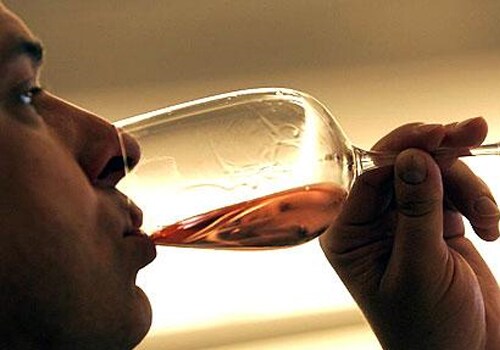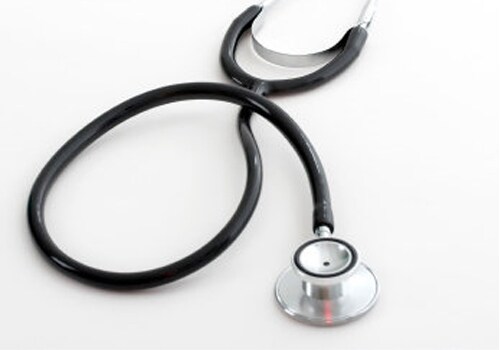-

What is atrial fibrillation?
Atrial fibrillation/flutter is a heart rhythm disorder (arrhythmia). It usually involves a rapid heart rate, in which the upper heart chambers (atria) are stimulated to contract in a very disorganised and abnormal manner.
-

What is the cause?
Arrhythmias are caused by a disruption of the normal electrical conduction system of the heart. Normally, the four chambers of the heart contract in a very specific, coordinated way. The electrial impulse that signals the heart to contract in a synchronised way begins in the sinoatrial node (SA node). This node is the heart's natural pacemaker. The signal leaves the SA node and travels through the two upper chambers (atria). Then the signal passes through another node (the AV node), and finally, through the lower chambers (ventricles) through this bundle and bundle branches. This path enables the chambers to contract in a coordinated fashion.
In atrial fibrillation, the atria are stimulated to contract very quickly and differently from the normal pattern. The impulses are sent to the ventricles in an irregular pattern. This makes the ventricles beat abnormally, leading to an irregular (and usually fast) pulse.
Atrial fibrillation can be sometimes part of a condition called sick sinus syndrome, where the heart rate may alternate between slow and fast. Atrial fibrillation can affect both men and women. It becomes more common with increasing age.
Causes of atrial fibrillation include:- Valvular heart disease (especially mitral stenosis and mitral regurgitation)
- Alcohol use (especially binge drinking)
- Congestive heart failure
- Coronary artery disease (especially after a heart attack or coronary artery bypass surgery)
- High blood pressure (hypertension)
- Hypertrophic cardiomyopathy
- Overactive thyroid gland (hyperthyroidism)
- Pericarditis
-

What are the symptoms?
One may not be aware that the heart is not beating in a normal pattern, especially if it has been occurring for some time. The symptoms may include:
- Sensation of feeling the heart beat (palpitations)
- Shortness of breath on activity
- Confusion
- Dizziness, light-headedness
- Fainting episode particularly in elderly
- Fatigue
-

How is it diagnosed?
The doctor may hear a fast heartbeat while listening to the heart with a stethoscope. The pulse may feel rapid and irregular. The normal heart rate is 60 - 100, but in atrial fibrillation/flutter the heart rate may be 100 - 175. Blood pressure may be normal or low. ECG clinches the diagnosis. Continuous ambulatory cardiac monitoring - Holter monitor (24 hour test) - may be necessary because the condition often occurs at some times but not others (paroxysmal atrial fibrillation).
-

What is the treatment?
The treatment depends on multiple factors like duration of atrial fibrillation, symptoms and associated co-morbidities.
In certain cases, atrial fibrillation may need emergency treatment to get the heart back into normal rhythm. This treatment may involve electrical cardioversion or intravenous (IV) drugs such as dofetilide, amiodarone, or ibutilide. These medications (e.g. Amiodarone) may work well in many people, but they can have serious side effects. Many patients may go back to atrial fibrillation even while taking these medications.
Drugs may also be needed to keep the pulse from being too fast and include medicines like beta-blockers, calcium channel blockers and digitalis.. Long-term treatment varies depending on the cause of the atrial fibrillation or flutter.
Some patients with paroxysmal atrial fibrillation, rapid heart rates, and intolerance to medication may need invasive procedure on the atria like radiofrequency ablation. For some patients with atrial flutter, radiofrequency ablation can cure the arrhythmia and so it is considered the the treatment of choice.
In patients who do not respond to treatment and continue to have a high heart rate with standard therapy, radiofrequency ablation can be done directly on the AV junction (the area that normally filters the impulses coming from the atria before they move on to the ventricles). Ablation of the AV junction leads to complete heart block so has to be combined with a permanent pacemaker insertion. Patient with Atrial Fibrillation due to valvular heart disease or when has comorbid illness like hypertension, Diabetes needs to be put on blood thinning drugs (oral anticoagulants like warfarin) to reduce the risk of stroke. -

What is the prognosis?
The disorder is usually controllable with treatment. Many people with atrial fibrillation do very well. Atrial fibrillation tends to become a chronic condition, however. It may come back even with treatment.
-

What are the complications?
- Stroke, if clots break off and travel to the brain (drugs that thin the blood such as heparin and warfarin can reduce the risk)
- Heart failure
- Fainting (syncope), if atrial fibrillation and atrial flutter cause the pulse to be too quick or slow


















